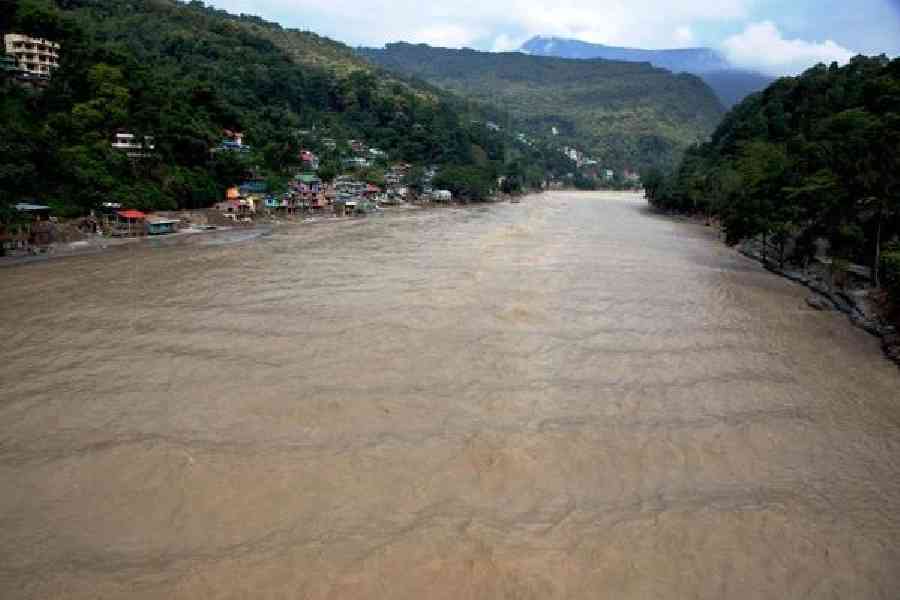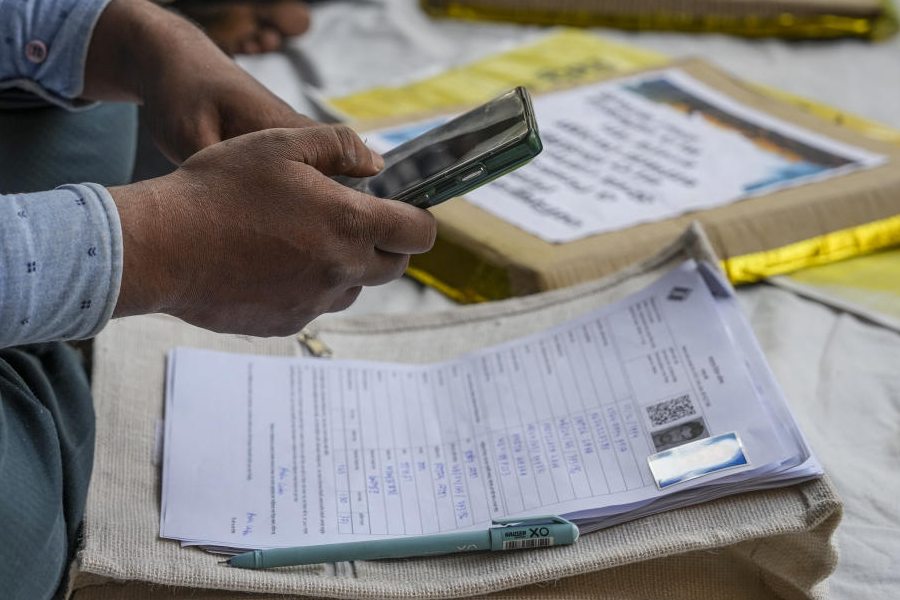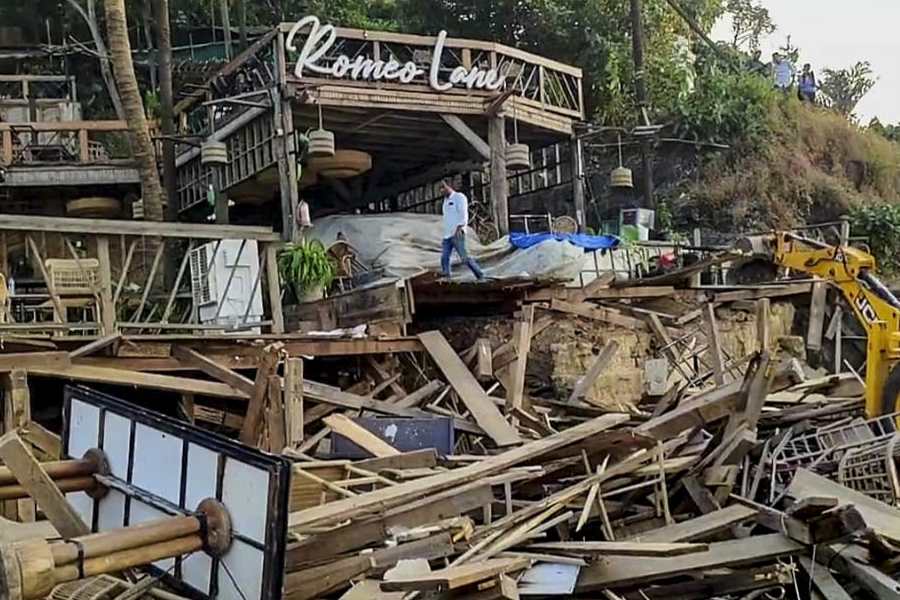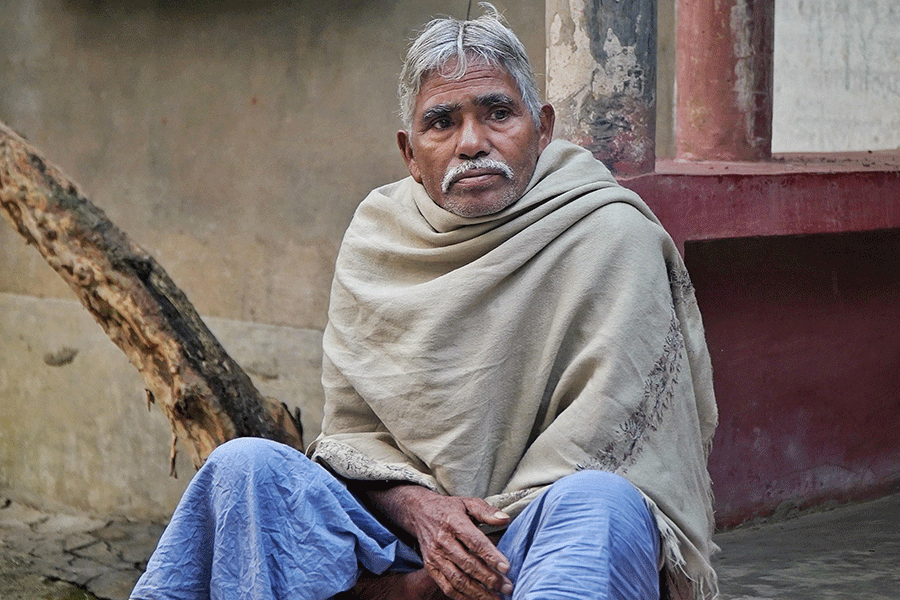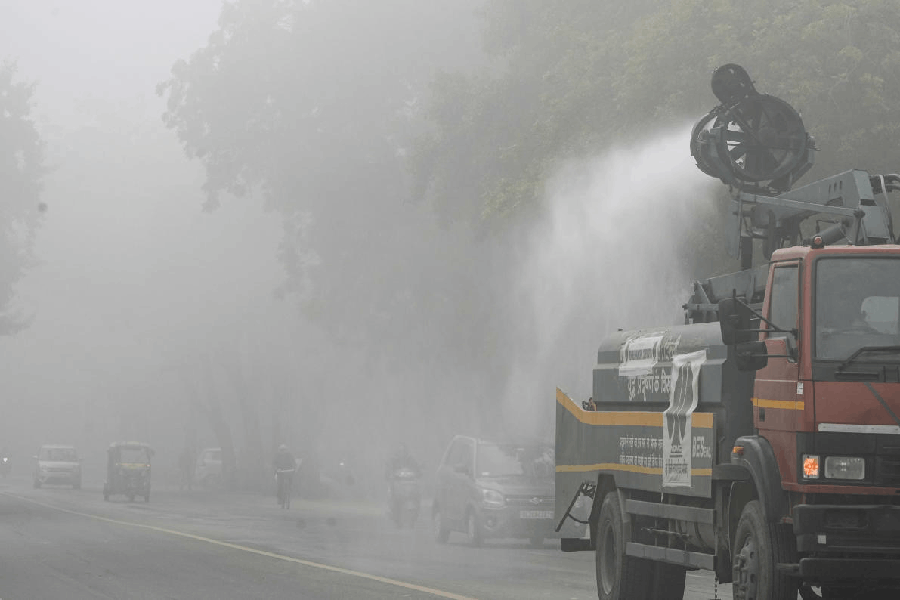The riverbed of the Teesta has risen by almost 14 metres, a height which is more than that of a normal four-storey building, at Melli in Sikkim following the glacial lake outburst flood(GLOF) in October 2023, a study has revealed.
The riverbed at Teesta Bazar in Bengal has also been elevated by six to seven metres, a report prepared by a committee constituted by the Union ministry of water resources has said.
The six-member team constituted to study the morphology of the river had surveyed the Teesta from Zeema in Sikkim to Teesta Bazar in Bengal along a stretch of 140km, which included 133km in Sikkim and 7km in Bengal.
The Teesta originates from the Tso Lhamo Lake in the trans-Himalayan region of north Sikkim and flows approximately 414km before merging with the Brahmaputra in Bangladesh.
“..huge deposits have forced the river with a flat slope (at Melli) to expand on both banks. Cross-sectional data supports satellite-based observations, indicating a
rise of up to 14 meters in the riverbed post-GLOF,” the report states.
The report adds that the river bed has also risen by five metres at Rangpo in Sikkim and by “6-7 meters” in Teesta Bazar in Bengal.
“The implications are serious, including increased flood hazard, potential bank overtopping, and altered flow paths,” the report has warned.
NH10, the lifeline of Sikkim, runs along the Teesta river and experts have already warned that the fate of the highway is sealed.
During monsoons, NH10 repeatedly closes. Sikkim chief minister Prem Singh Tamang (Golay) had earlier said the government lost a revenue of ₹100 crore a day because of the highway’s closure.
The Darjeeling-Kalimpong route runs through Teesta bazar and there have been occasions when the route has been closed after river water flowed into the road.
The report said the GLOF on the South Lhonak lake triggered significant geomorphological changes along the Teesta.
The experts have underlined that over a period of time, the river profile gets stabilised and regains its regime on its own eventually.
The committee is not in favour of dredging unless absolutely necessary for certain specific purposes, following scientific studies.
“Dredging throughout the river reach is not considered techno-economically viable,” read the report.
The team has recommended intervention selectively in the form of of anti-erosion/pro-siltation measures “such as bank revetment, sub-merged gabion studs, gabion walls, RCC retaining wall, RCC porcupines, bio-engineering works etc depending upon the specific need of the location, velocity profile, silt content etc” in areas close to important infrastructures.
The GLOF had obliterated the Sikkim Urja Teesta-III hydropower project, which was built at a cost of ₹13,965 crore.
The October 3, 2023, flood destroyed 33 bridges, damaged around 3,600 homes and 920 shops and impacted approximately 88,000 people in Sikkim, with over 100 dead or still missing.
In the Kalimpong district of Bengal, the GLOF caused significant damage, with 483 houses fully destroyed and 76 partially affected.
The Sikkim government has presented a post-disaster need assessment report to Prime Minister Narendra Modi, estimating that the state will require ₹3,673.25 crore for recovery and reconstruction.
Scientists have warned of further GLOFs in Sikkim.
According to the Glacial Lake Atlas of Indian Himalayan River Basins published in 2023, Sikkim has 733 glacial lakes — 589 in north Sikkim, 84 in east Sikkim and 59 in west Sikkim.

